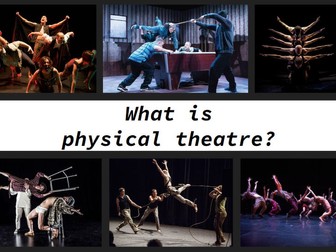GCSE Physical Theatre 16 Lesson SoW
<p>This 16-lesson Physical Theatre Scheme of work is perfect for any teacher or practitioner teaching Physical Theatre and working towards students’ devised performances. Inspired by the works of Frantic Assembly, Rosas Danst Rosas, Paper Birds, Charlie Chaplin and Comedia Dell’arte; Broadway shows include 2024’s The Outsiders, the National Theatre’s One Man Two Guvnors and West End’s The Curious Incident of the Dog in the Night-Time. Most lessons are supported with embedded YouTube videos (links also provided in slides and notes).</p>
<p>Lesson 1 - What is Physical Theatre<br />
Lesson 2 - Frantic Assembly<br />
Lesson 3 - Flying (Frantic Assembly)<br />
Lesson 4 - Round-by-Through (Frantic Assembly)<br />
Lesson 5 - Round-by-Through and Still Images<br />
Lesson 6 - Chair Duets (Frantic Assembly)<br />
Lesson 7 - Chair Duets cont.<br />
Lesson 8 - Chair Duets (as a Four)<br />
Lesson 9 - Performing with restricted space<br />
Lesson 10 - Restricted Space Cont.<br />
Lesson 11 - Moving in unison and Cannon (Rosas Danst Rosas)<br />
Lesson 12 - Slow Motion (The Outsiders)<br />
Lesson 13 - Mime and Exaggeration (Charlie Chaplin and Comedia Dell’arte)<br />
Lesson 14 - Creating a performance<br />
Lesson 15 - Rehearsing a performance<br />
Lesson 16 - Performing</p>
